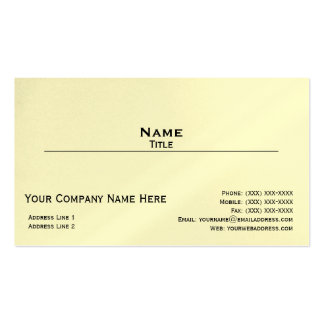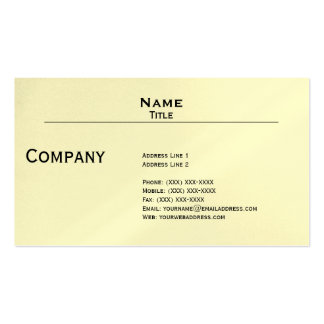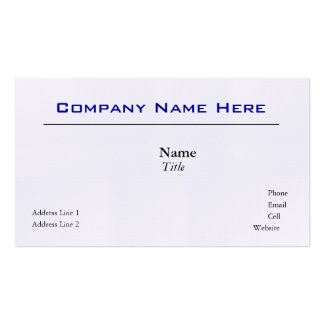As recently as 2007, directory links were used far and wide by all types of SEO and online marketing professionals. This included the type of directories that were either paid or existed only as a source to provide backlinks. After Google applied penalties to the unscrupulous directories – and sometimes those who they linked to – site owners and even SEO professionals became leery about submitting their precious URLs to any directory at all.
Directories are all risky inbound link sources, right? Nothing has changed since Matt Cutts told us himself about watching out for scammer directories, right?
I too, had been under the impression that 99% of inbound directory links were useless; not worth the Google-penalty risk – and, granted, many, many are just that. But apparently, to-directory-link-or-not-directory-link has been an especially bewildering thing for website and e-commerce owners, who have less experience or information about SEO best practices.
And that’s where a recent trend has once again made a 10-year-old SEO linking method a relevant conversation. Site owners are actually hurting their SERPs and rankings because they’re taking an ax to every single directory link. I don’t know if there was an industry-wide link audit that revealed a ton of low-quality directory inbound links, or if some other reason exists for a sudden surge of chopping ALL inbound links. These site owners apparently do not understand that an inbound link from Yahoo Directory can significantly boost your SERPs – and likewise, significantly make it plummet if removed.
Why? What’s the difference from one directory to the next? Aren’t all directories the same in Google’s eyes?
Heck, no.
Matt Cutts himself partially addresses the “directory links” conversation.
As Cutts informs us in this Q&A video, not all directories are created equal. Regardless of whether a directory link is paid or not, it is the relevance and quality that determines its validity as a backlink source. In other words, if the link is unnatural, it violates Google policies. If it’s natural, makes sense, and is relevant to the average website visitor – you’re good to go.
So if the question that is causing so many owners to fudge up their rankings is “what’s the difference between a Google-approved directory link and a bad one?” – the following factors and/or questions can be used to determine that.
1. Keyword-Anchored Links
If you arrive at a directory, and you see a bunch of keyword-anchored links listed, this is a red flag. Regardless of whether your link is listed as a URL, title page or brand name, the site as a whole has a good chance of being penalized by Google, including the sites whose backlinks it contains.
2. The Directory Accepts All Links and/or Says “Submit your URL”
Some of these directories will even stress how important link-building is for SEO, and claim that adding a backlink to your site will improve traffic and online visibility as well. Why even submit a URL to these sites? The little traffic they receive is simply from other website owners who are only there to submit their URL, and their SERPs are so far down in Google results that no one will ever find them organically. The screenshot below tells you just how many reviews/ratings/votes each URL has received from this directory.

3. Are All of Its (allegedly many pages) Indexed?
Sites that are soon to be de-indexed or have their domain expire are sometimes bought up by people who make money by charging users for backlinks, and then abandoning the site. There are countless directories that have expired, and therefore useless, such as this expired and/or banned directory list from Moz.
In addition to that, the directory’s indexed pages should be equivalent to the number of listings/inner pages it represents. If there are 2000 different pages on the site for various URLs and listings, there should be at least that many Google results with the query site:www.directoryxyz.com – which is how you search a site’s indexed pages.
4. The Directory Either has an Irrelevant Name or One Obviously for Creating Links
Examples for irrelevant directory names are often not even words – or acronyms- like Ahszkj.com, or fx-j.com, which have both been banned. If you see a directory whose web address is “webspreadyourURL.net” or “Upyourlinkjuice.com” – it may as well say “come-list-your-URL-here-if-you-want-Google-to-hate-you.com.”
5. It Boasts About Human-Edited Listings, Pagerank or being an Editorial-Based Directory
There are exceptions to this, so it is not always true that if a directory says it has human editors that the opposite is true – but not even in its meta descriptions for its directory results does Yahoo Directory mention esteemed human-edited listings or incredibly fascinating editorial.
So What Directories Are OK?
One of them was just mentioned in the last bullet point. But there are less-than-well-known directories that are also safe for submitting your URL to for backlinks. Essentially, what applies to any type of inbound link to your site applies to a directory link as well. Such as:
- Is the directory relevant to your site? Is your website a ballet shoes and costumes e-store with links from a dog food e-store directory?
- Does the directory edit and review URL submissions? Does it have more than an 80% acceptance rate?
- Is it edited and admin-ed by people, or by an auto-bot?
- Does it have real content, or is it purely a link-exchange system?
These are all questions that can help discern the validity of a directory. A few examples of respectable directories include Jayde.com, Dmoz.org, sunstream.com, lii.org.
Whether paid or unpaid, an unnatural link is an unnatural link, and that includes directories. Because the same rule applies to both, there is no reason to fear all directories. Every directory on the web is not cursed by Panda, Penguin and Pay-day Loan. On the contrary, a link from the Yahoo Directory or DMoz – both of which have a PageRank of 8 – can be a tremendous boost. There is still usefulness to the dinosaur-ish directory link – just as long as it’s the right kind.








No comments:
Post a Comment